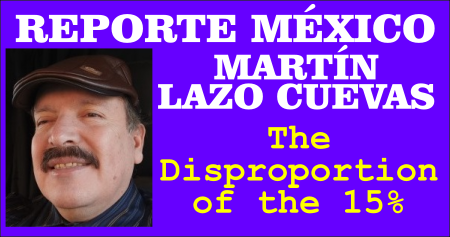MARTÍN LAZO CUEVAS: The Disproportion of the 15%

By Martín Lazo Cuevas
In a democracy, public opinion is measured by majorities. This does not
mean silencing minorities, but it does require a clear recognition of
where the social consensus lies. That is why it is troubling—and
revealing—that some voices are trying to build a narrative of
presidential wear and tear based on 15% disapproval, while deliberately
ignoring the more significant data point: an 85% approval rating.
Let’s put the figure into perspective. If out of every 100 people
surveyed, 85 approve of President Claudia Sheinbaum Pardo’s performance
and only 15 disapprove, why is the 15% given analytical prominence? Why
does that number become the focal point of criticism when the
overwhelming majority clearly supports the country’s direction?
In this context, it is worth recalling another key fact: when Sheinbaum
was elected, she secured 59.76% of the vote. Today, while in office, her
approval rating has risen to 85%. That is a 25.24-point increase. It is
uncommon for a political leader’s popularity to rise during their tenure;
the opposite is usually true. This growth is not accidental—it reflects
a presidency that has not only retained but expanded its base.
Given these facts, focusing solely on the 15% is far from neutral. It is
a clear case of cherry-picking—selecting only the fragments that support
a preconceived stance. It also reflects biased framing, where the
interpretive lens distorts the full picture. The exception is presented
as the rule, while the democratic weight of the majority is dismissed.
Criticism is healthy—even essential. But for it to be legitimate, it
must be informed, contextual, and balanced. Otherwise, it becomes dogma.
In that sense, questioning the validity of an 85% approval rating based
on the existence of a 15% disapproval is not critical thinking—it’s a
rhetorical maneuver that twists facts to support a predetermined
narrative.
In a democracy, all voices matter. But not all voices carry the same
weight. And in this case, the voice of the 85% cannot be silenced in the
name of the 15%.



